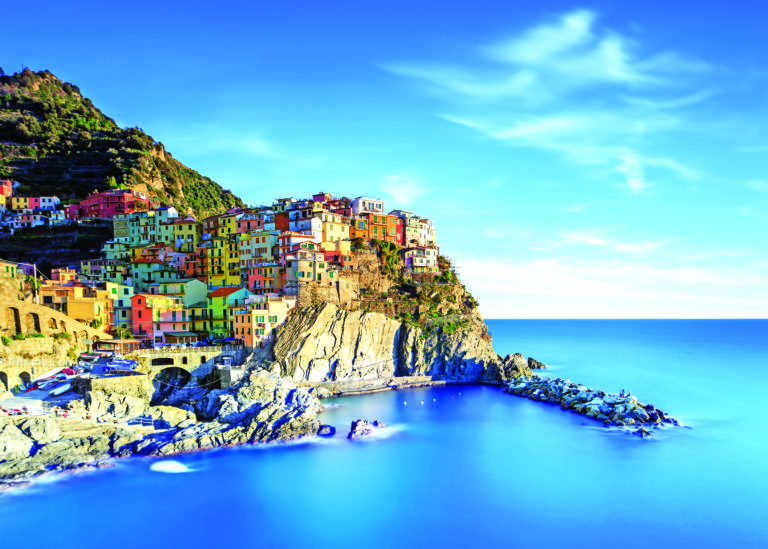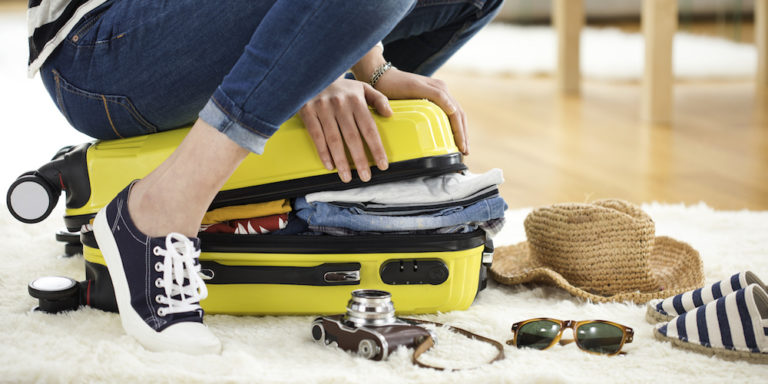The Maldives is an archipelago that is constantly expanding, with new human-made islands being constantly added to the area’s 1,192 natural islands.
The latest and largest project is the Fari Islands in the North Malé Atoll.
Initially a set of small sandbanks jutting out of the Indian Ocean, there are now three large islands, born in a five-year period using pumps, dredgers and breakwaters. The largest is home to a tourist resort.
At first glance, it looks like many other resorts, with a shimmering turquoise lagoon whose temperature is a steady 28 degrees Celsius.
Palm trees are dotted along sandy white beaches, which are lined with villas and over-water pool villas in the lagoon.
But take a closer look at the Patina Maldives Resort and it is all a little too perfect to be natural.
The resort is made up of bays that are just the right shape, decorated with monumental works of art, a marina and 12 bars and restaurants.
“We even have three food trucks that are unique to the Maldives,” says head chef John Baker. The Canadian chef offers a wide range of culinary delights than span a burger joint to a Japanese gourmet restaurant.
Controversy surrounding artificial islands
You might think that “anything is possible” is the motto, surveying the 2.6-kilometre paradise built from scratch. But there are critics of this brave new world, with purists wondering whether all this is really necessary.
Sonu Shivdasani, co-founder of the Soneva resorts, renowned for their sustainability, is a firm opponent.
“The extraction of sand and the construction of islands severely damages the reef around the lagoons.” But Patina’s resort manager Guillaume Verdier disagrees, saying construction took the coral reefs into consideration.
Space is the issue, with not enough suitable islands available, resort operators are increasingly opting for artificial ones. “Their construction costs are not much higher than the development costs for natural islands,” says Verdier.
What’s more, planners can allow their creativity free rein. “Many guests on the island don’t even realise it is man-made,” he says.
The Patina Resort planted 350,000 plants and hundreds of palm trees two years before opening to make sure there was some greenery to greet the guests. Now the vegetation is pretty dense and more will flourish, as you can see at the One & Only Reethi Rah, which opened in 2005.
The resort was one of the first artificial island projects in the Maldives. It has since blossomed into a tropical paradise and one of the world’s most popular luxury resorts, many of which are created on man-made islands.
Such creations are not as new as they may seem. Even back in the Stone Age, people in Ireland and Scotland were building crannógs using tree trunks, sand and stones. There are six further artificial islands that may be more familiar to you.

Leader of the pack: Palm Jumeirah, Dubai
This may be the most spectacular artificial island project worldwide, located off the coast of Dubai. Built over a seven-year period, the Palm Jumeirah opened in 2008.
The island looks like a palm tree from above and its “trunk” measures 600 metres across and juts out 4 kilometres into the Gulf. To protect it from storm surges, the palm tree shape is surrounded by a breakwater formed like a crescent.
The 12-kilometre outer ring features the Atlantis resort, a large aquarium and other hotels, all reachable through an undersea tunnel. You can find even more hotels on the trunk of the island, with villas and holiday homes lining the 16 “palm frond” shaped areas.
The Palm cost an estimated $10.8 billion and the construction effort was similarly eye-watering. Builders piled up some 200 million cubic metres of sand and rock off the coast of the United Arab Emirates in a process known as “vibrocompaction,” to create a solid foundation. This massive intervention earned widespread criticism from environmentalists.

An artificial cruise resort in the Caribbean
Cruise companies, once popular for the ever more impressive features on their ships, are now also creating private islands for passengers. MSC Cruises built an artificial island in the Caribbean as a stopover on cruises. The Ocean Cay Marine Reserve aims to impress travellers with a slew of fancy features.
Some 80,000 palm trees, shrubs and other plants were brought to the island which boasts eight beaches, a restaurant and several bars.

Dutch Flevoland, the “largest artificial island in the world”
The Dutch did not quite build an island way out in the North Sea, but they did take a lot of land from the sea by building dykes. Flevoland is still separated from the mainland to the east and south by lakes and canals and is sometimes described as the largest artificial island in the world.
The province, created in 1969, has around 1,400 square kilometres of farmland and pasture, plus large cities like as Almere and tourist resorts such as Urk.
The province’s smallest and oldest municipality attracts tourists with its beautiful fishing harbour and was once an island in its own right. People flock to take photos of the historic Urk lighthouse.
Off Kōbe: Rokko Island in Japan
Landfill work for Rokko Island off the Japanese city of Kōbe began in 1972 and construction continued until 1992 to create the island, known in Osaka Prefecture for its western cityscape.
Alongside flats, Rokko Island also features tourist hotels and the futuristic Kōbe Fashion Museum, well known for its fashion exhibitions. There’s also an art museum showing oil paintings and more than 2,000 works by Japanese painter Ryohei Koiso, who was born in Kōbe.
Upgrade for the “Hawaii of China”: OceanFlower Island
Developers say Ocean Flower Island in the southern Chinese province of Hainan will become the largest artificial island in the world. Dubbed the “Hawaii of China,” it already draws an annual 65 million Chinese people to its sandy beaches, tropical forests and year-round swimming weather.
Given the shortage of space for new resorts along the natural coast, construction work is under way on three connected artificial islands that feature hotels, holiday flats, restaurants, duty-free shopping centres and leisure parks, along an area of 3.8 square kilometres. These include a water park with pools and slides grouped around a mountain covered in artificial snow. Alongside domestic travellers, Ocean Flower Island is also expected to attract more people from abroad.

The Pearl Qatar: Riviera flair on the Gulf
The Pearl flickered across television screens worldwide during the 2022 World Cup. The island known to Qataris as “the Riviera Arabia” is around 300 metres off Doha.
You can find villas, skyscrapers and palazzi grouped around a marina that, like the bridges, recall Venice. The island, created in 2006, is popular among locals and is also a residence or tourist destination for wealthy Qataris and foreign travellers.







